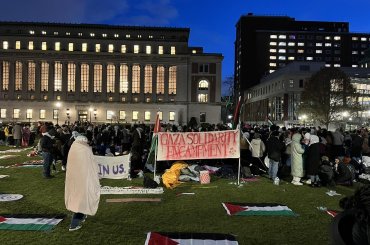The big story of the week has been the much-acclaimed re-opening of the torturous Rafah Crossing. It had been operating intermittently, if at all, and for limited categories of people for more than 4 years now. For what seemed like eternity, the Mubarak regime- الله لا يردهم -, colluding with the United States and Israel to keep Gaza closed, had “conditioned” the re-opening of the crossing on a Fateh-Hamas reconciliation agreement, the release of Israeli soldier Gilad Shalit, and a return to the much-maligned US-brokered AMA (Agreement on Movement and Access), in which European monitors and live-video streams acted as proxies for Israel, who ultimately retained control over the crossing.
There were some dark, dark times over the course of those four miserable years, and beyond, during which I and tens of thousands of others were prevented from entering our own homes over and over again, during which we were beaten and detained, humiliated and abandoned, when I wondered how would it ever end? How on earth could we as Palestinians find a way out of even this smallest and seemingly inconsequential dimension of our struggle, Rafah, this sole gateway, this portal, in and out of tortured little Gaza? How could such a routine aspect of life, movement, have become so impossible, yet made to seem so threatening, its stifling designed to seem so ordinary and justified? And why could no understand we we were mothers and fathers, sisters and brothers, sons and daughters, lovers, students and teachers…and we were tired like ordinary human beings get tired, of this miserable, hell. How could the status quo finally change? I can honestly tell you the last thing I expected was for an epic overthrow of Mubarak.
But back to Rafah. Not to be a buzzkill or anything, but I think its time to break down the facts here. It’s true that the crossing has been open on a more regular basis (6 days a week) and to a greater number of Gaza residents for visa-free travel (unless you happen to fall into the dreaded 18-40 “male security threat” age-range), and as anyone who has suffered long hours (or days or weeks or months) in the punishing heat or bone-numbing cold of this little corner of the world awaiting entry or exit can attest, this news should be celebrated.
But with access STILL limited to Palestinians in Israeli-controlled population registry, the so-called re-opening of Rafah Crossing is simply return to status quo of years past. Only Palestinians listed in the Israeli-controlled Palestinian population registry, carrying an Israeli-approved Gaza ID card, or hawia, can use Rafah Crossing. And those who do cross are still subject to arbitrary security screenings and possible denial of entry-or exit.
Translation: Palestinians from the West Bank or East Jerusalem-even those with hawiat, Palestinians in refugees camps outside the Occupied Palestinian territories, “Filisteeniyit il-dakhil” aka 1948 Palestinians, or Palestinians abroad, are all still not allowed passage to Gaza through Rafah. This includes Palestinian families where one spouse possesses an ID, but the other does not, such as my own family, OR internally displaced Palestinians who live in Gaza but whose IDs were never approved by Israeli authorities (who are not allowed to exit). They number in the tens of thousands.
Additionally, according to the NGO Gisha, the expansion does not appear to include passage of goods, which are restricted to the Israeli-controlled crossings and subject to prohibitions on construction materials and export.
It also warrants reminding that while one border has been open, Gaza remains under tight maritime and aerial siege, and continues to be closed off to the rest of the Occupied Palestinians territories in the West Bank and East Jerusalem, Palestinian’s cultural, economic, and academic capitals. Israel has a legal obligation to permit passage of people and goods between Gaza and the West Bank, recognized as a single territorial unit.
In addition, the deadly buffer zone along Gaza’s coastal borders, which juts up to 2km inland, preventing farmer’s from accessing their farm land, 1/3 of which exists in this zone, is still in place.
The collective result: development, prosperity, and possibility are stifled, as aid dependence rises. We should be under no illusions to the contrary. Gaza is still occupied, is still besieged.
Should be be thankful Rafah’s closure has eased? Absolutely. Should we be complacent, or simply settle for what we have? Absolutely not.
For more, check out GISHA’s “Gaza cheat sheet“, which breaks down the facts and figures and helps you understand what’s really behind the siege.
This is a crosspost from Laila El-Haddad’s Gaza Mom site.


